What We Love About Iowa State
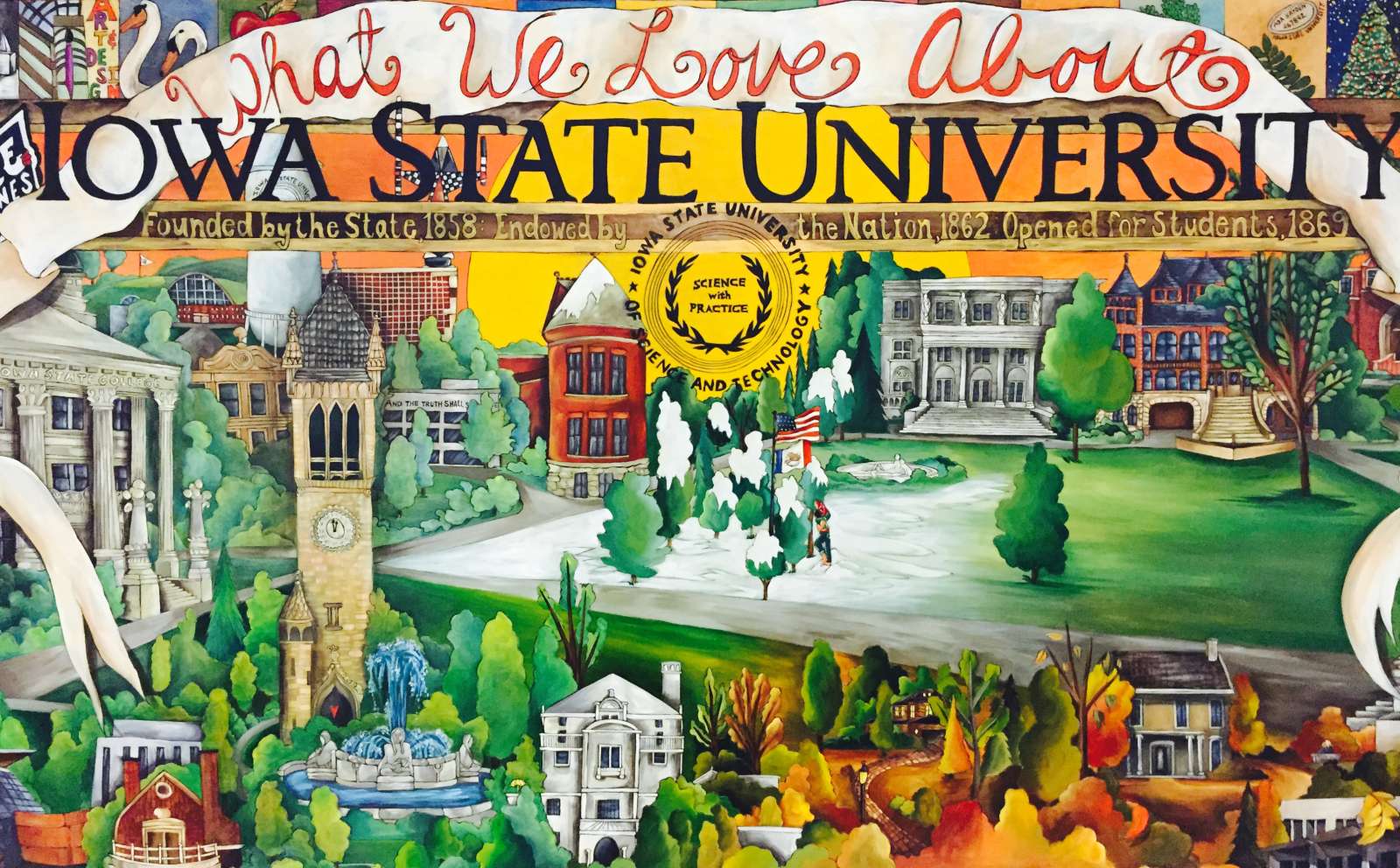
Burned wood and acrylic paint, 2007
Location: Fourth Floor, north of glass wall

Commissioned for the Art on Campus Collection by the Office of the President, Sesquicentennial Planning Committee, University Museums, Iowa State University, Ames, Iowa and by Sticks, Des Moines, Iowa. It is in the Art on Campus Collection, University Museums.
The university commissioned artist and Stick’s owner, Sarah Grant, to create a commemorative art mural for Iowa State's 150th birthday. Titled What We Love About Iowa State, this work captures the history, traditions, and excellence of the university that make ISU special. The mural's concept was a collaboration between the university and the artist, who lives in Ames. Alumni, students, faculty, and staff were asked to submit what they love about Iowa State and their suggestions were incorporated with historical fun facts about Iowa State into the design.
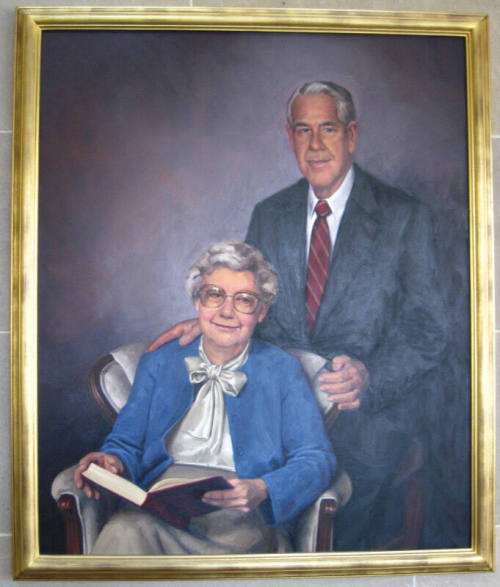
Dr. W. Robert Parks, Iowa State University's eleventh and longest-serving president (1965-1986), was the first social scientist to head the university. On assuming his presidency, he articulated a "new humanism”, and he expanded the role of the humanities and social sciences within the university. Under Dr. Parks' visionary leadership, Iowa State experienced record growth in student enrollment, academic programs, library collections, and physical facilities.
His wife, Dr. Ellen Sorge Parks, was the first woman at the University of Wisconsin to receive a Ph.D. in political science. Throughout her lifetime she continued her scholarly interests in political science and British history. An avid user of the Iowa State University library, she once described the library as "the essence of the university."
The Parks’ mutual support for the university library and respect for its role in learning and research led to the central library building being named the William Robert Parks and Ellen Sorge Parks Library in 1984.
"The steadfast support of Dr. W. Robert Parks and Ellen Sorge Parks to the Iowa State University Library has continued long beyond the end of their official university duties. This portrait of them honors their unwavering dedication." Olivia M.A. Madison, Dean of Library Services, April 2000
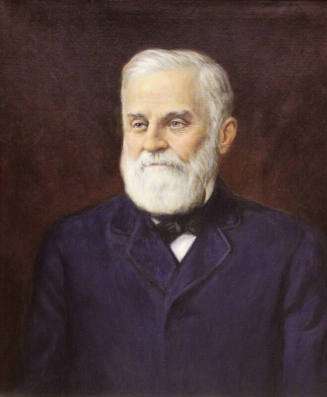
Dr. Adonijah Strong Welch was serving as United States Senator from Florida when he accepted the position of President of the newly established Iowa State Agricultural College. Dr. Welch was serving as President when he was asked by the United States Commissioner of Agriculture to investigate and report on the organization and management of agricultural schools in Europe. While in Europe, Dr. Welch’s opponents who were unsatisfied with the college’s development sought to remove him from office. This effort led to Welch’s resignation as president of Iowa State in 1883. Dr. Welch returned to Europe a second time to recover his health and on returning to Iowa State in 1884 accepted the chair of the history of civilization and practical psychology. He continued to teach at Iowa State until his death in 1889.
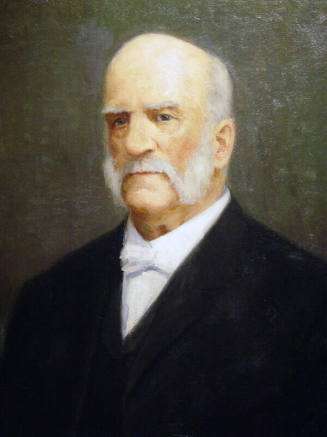
While at Iowa State, Seaman Asahel Knapp was the first Chair of Agriculture. He was responsible for developing the agricultural curriculum and conducting early experiments in animal husbandry, dairy industry, and farm crops. Knapp helped draft the 1883 Experiment Station Bill that was presented to the United States House of Representatives. After leaving Iowa in 1885 he continued to pursue his agricultural interests and is credited for starting the first agricultural demonstration farm at Terrell, Texas.
Knapp died in 1911, and was buried at the college cemetery in Ames, Iowa.
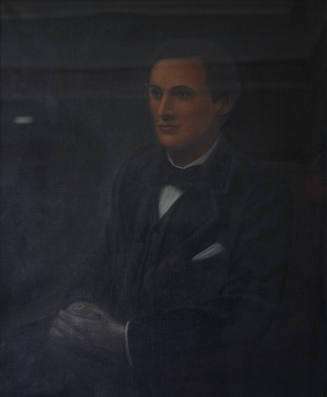
Leigh S. J. Hunt became the third president of Iowa State Agricultural College. His lack of experience and aggressive style of leadership led to conflicts with the students and faculty and he resigned in 1886 after only one year.
Dr. William Isaac Chamberlain’s reputation was well-known when he became the fourth President of Iowa State College. However, Dr. Chamberlain's presidency was a turbulent one. He regularly defended the college's curriculum which was often criticized by local citizens for not focusing enough on agriculture. On campus, many students opposed fraternities due to their secretive and exclusionary nature. Thus, his backing of student fraternities would eventually cost him the support of most of the students. He never did gain the favor of the faculty. Dr. Chamberlain resigned in 1890 and moved back to his Ohio farm where he continued to conduct agricultural experiments as well as write and lecture on agricultural issues.
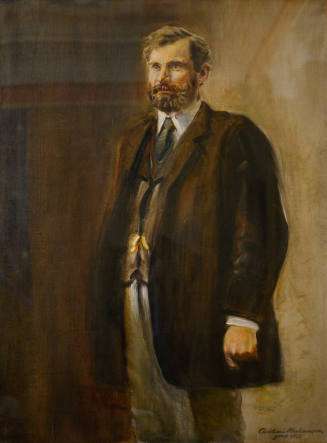
In 1891, Beardshear was appointed President of Iowa State, and during his tenure, Iowa State College truly came of age. Beardshear developed new agricultural programs and was instrumental in hiring premier faculty members. He expanded the university administration, and the following buildings were added to the campus: Morrill Hall, the Campanile, Old Botany (now Catt Hall,) and Margaret Hall.
While Beardshear was President the school colors of cardinal and gold were named, Iowa State became known as the Cyclones in 1895, and the first university yearbook, the Bomb was published in 1893. In his honor, Iowa State named its central administrative building (Central Building) after Beardshear in 1938.

In 1903 A.B. Storms was appointed as the sixth president of Iowa State College. During his tenure, Iowa State began the Agricultural Extension Service, acquired hundreds of acres of land, developed a plan for campus landscaping and modernization of utilities, and erected eighteen new buildings. Iowa State organized academic departments under the direction of deans and increased the number and type of courses and degrees offered. In addition, the college lifted the ban on fraternities and sororities as well as loosened other policies regarding the students' social activities. During this time the State of Iowa established the State Board of Education. Storms' strong opposition to the newly created board led to his resignation from Iowa State in 1910.
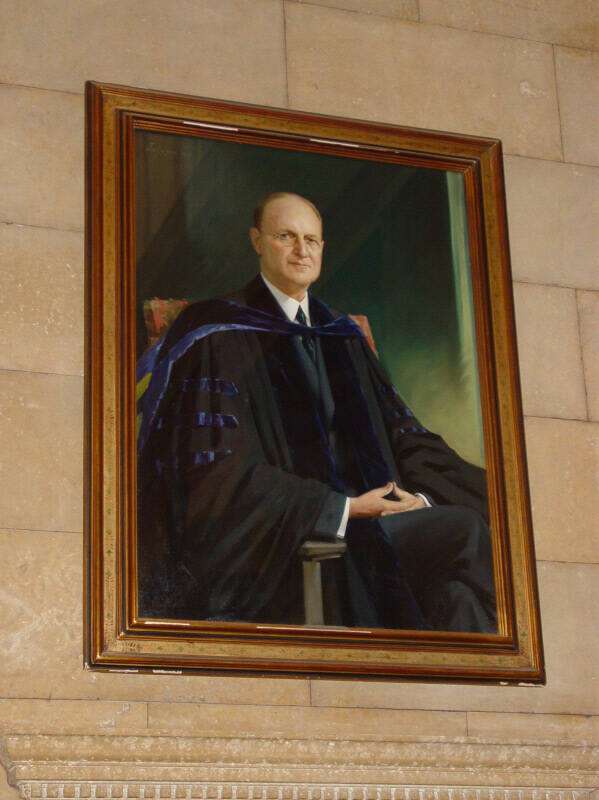
Raymond A. Pearson headed the New York Department of Agriculture for four years prior to his appointment as president of Iowa State College. Pearson completed the divisional organization of undergraduate programs; strongly promoted the graduate program, which was given divisional status in 1915; broadened extension service; and gave wholehearted support to "big-time" goals in athletics. While at Iowa State College he served as Assistant Secretary of Agriculture during the war emergency period of 1917-18.
Campus construction during his administration surpassed that of any other era prior to the post-World War II boom; 14 academic buildings in service during the 1970s were constructed during Pearson's term.
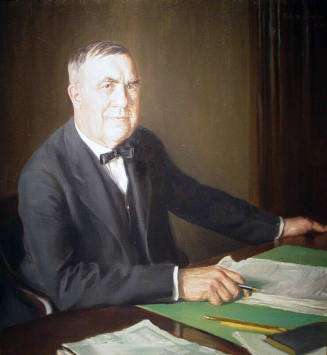
Herman Knapp graduated from Iowa State College in scientific agriculture, and served as secretary to the president, director of agriculture, treasurer, registrar, and purchasing agent and business manager. From 1926-1927 he was acting president of Iowa State College until the appointment of President R. M. Hughes. The State University of Iowa awarded Herman Knapp an honorary Doctor of Laws degree.
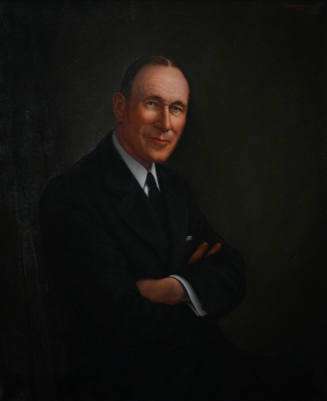
Raymond Dr. Mollyneaux Hughes was appointed to the presidency of Iowa State College in 1927. Dr. Hughes received an honorary doctorate degree from Iowa State in 1936.
During his time at Iowa State, Dr. Hughes guided the college through the difficult Depression years, he brought Iowa State into a more harmonious relationship with sister institutions in the state system; promoted the enrichment of technical curricula; broadened research to focus on problems involving interdivisional efforts; established several research and service supporting agencies, most notably the Statistical Laboratory; and instituted the development of placement and student counseling services.
After his retirement, Hughes continued to teach and conduct research in Ames.
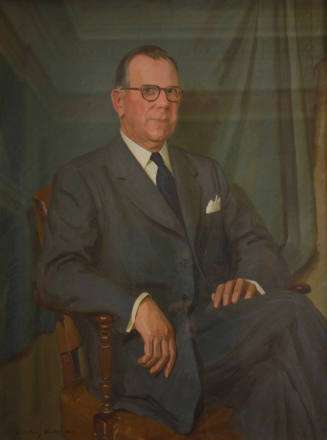
Charles E. Friley succeeded Dr. Raymond M. Hughes as president of Iowa State in 1936 after serving as interim for five months. His seventeen year term was the longest of Iowa State's first eleven presidents, and spanned higher education's most turbulent era, from the closing phase of the Depression through World War II and into the post-war "educational revolution." It was an administration characterized by emergency efforts, the most notable among them Iowa State's participation in the Manhattan (atomic research) project. Friley was directly responsible for Iowa State's establishment of the nation's first educationally-owned and operated television station.
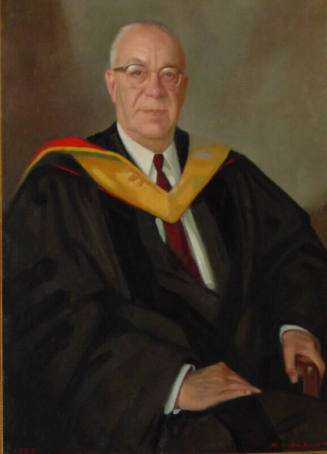
The first Iowa State graduate to occupy its highest office, James H. Hilton completed his B.S. in animal husbandry at Iowa State in 1923. He was named dean of agriculture in 1948, where he served until becoming Iowa State president. During his administration, Iowa State experienced the greatest growth in its history. Enrollment soared from 7,800 to more than 12,400. The "book value" of the physical plant increased from $38 million to 471 million. The volume of research rose to $20 million annually. Course offering and public service programs were broadened.
In 1959, a year after its centennial, the institution received official recognition of its status as Iowa State University of Science and Technology. Upon his retirement from the presidency, Hilton was named Iowa State's first director of development.
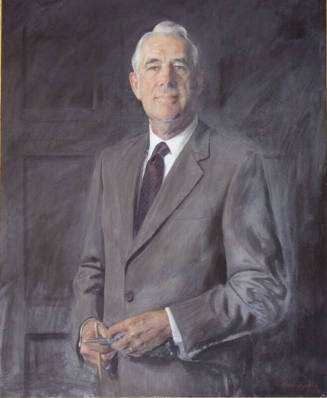
After serving in the navy during World War II, Dr. W. Robert Parks moved to Iowa State College and became a professor of government. After spending a few years at the University of Wisconsin he returned to Iowa State as the Dean of Instruction and became the Vice President of Academic Affairs until he was named the President of Iowa State.
During his presidency, Parks served as head of several national organizations. In 1969, he was named an honorary alumnus of ISU, the second person so honored. He received the first Christian Petersen Design Award for his leadership in the establishment of Iowa State University's College of Design. In 1984, the main library building on Iowa State University’s campus was named the W. Robert and Ellen Sorge Parks Library.
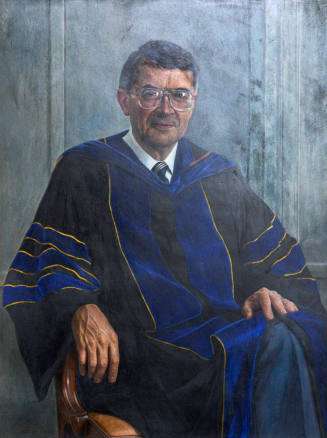
Gordon Pryor Eaton was appointed as President of Iowa State University in 1986. Under Eaton's leadership faculty salaries increased, research funding support increased, minority student recruitment was strengthened, a strategic planning process was established, and nine campus buildings were constructed.
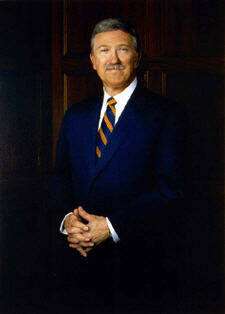
Martin C. Jischke served as the 13th President of Iowa State University. During his tenure, Iowa State's fundraising campaign "Campaign Destiny: to Become the Best" was an unprecedented success raising $458 million in just five years.
At Iowa State, Jischke focused on retaining and competing for top faculty and staff and supported efforts to improve professional development. The Miller Faculty Fellowship, the Center for Teaching Excellence, and Project LE/ARN were all initiated under his administration. Jischke oversaw improvements to campus facilities. The Molecular Biology Building, Administrative Services Building, Howe Hall, the Frederiksen Court Community, Reiman Gardens, the Thielen Student Health Center, the National Swine Research and Information Center, and the Jacobson Athletic Building were all constructed during his tenure. During his administration, Old Botany Hall was extensively renovated and renamed for Iowa State alumna and women's rights crusader Carrie Chapman Catt. The Jischke Honors Building, completed in 2002, was named in his honor.
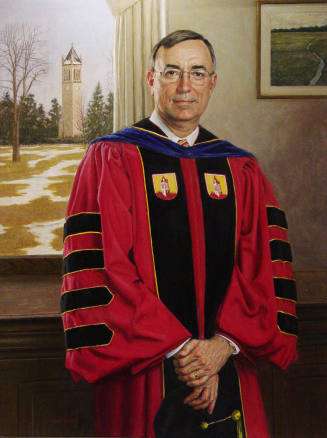
Gregory L. Geoffroy served as interim President for three months. Geoffroy began his tenure as Iowa State University’s 14th President in 2001. During his administration, Iowa State surpassed several milestones, including the completion of Campaign Iowa State, an $800 million fundraising effort. Iowa State received record amounts in external grants and funding and welcomed the largest student enrollments up until that time. Geoffroy doubled the number of endowed faculty positions on campus and he strongly supported research efforts by establishing the Bioeconomy Institute and the BioCentury Research Farm.
A number of major building projects were completed under Geoffroy's administration: the Gerdin Business Building, the Bergstrom Indoor Training Facility, Hoover Hall, the Biorenewables Research Laboratory, Hach Hall, the Roy J. Carver Co-Lab, and the Union Drive Community Center. Geoffroy taught in the Department of Chemistry after he resigned in 2011.
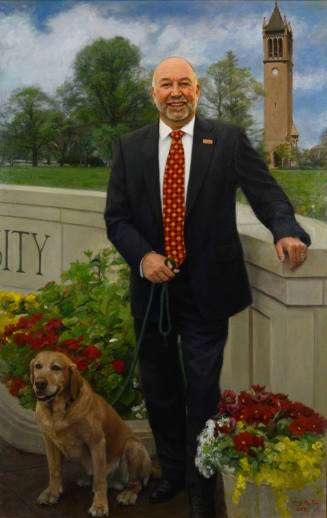
Dr. Steven Leath was the 15th president of Iowa State University. He placed major emphasis on enhancing the university's nationally recognized 1,700-acre central campus and its public art collection, which is one of the largest among U.S. public universities.
During his tenure, the university experienced a spike in enrollment. Student success reached unprecedented levels, including a record-high first-year retention rate. Research expenditures increased in part, because of Leath’s focus on large-scale, interdisciplinary, and multi-organizational research programs. Faculty numbers grew and he expanded the university’s focus on diversity by creating the cabinet-level Vice President for Diversity, Equity, and Inclusion position. Leath raised more than $200 million solely for student scholarships and support. He launched the university’s $1.1 billion capital campaign, Forever True, For Iowa State.
Leath co-founded the Cultivation Corridor, an economic development initiative to establish Central Iowa as a global center for excellence and innovation in ag biosciences, biotech, biorenewables, and advanced manufacturing. Leath oversaw major construction and renovation projects including Troxel Hall, the Hansen Agriculture Student Learning Center, Elings Hall, Sukup Hall, Geoffroy Residence Hall, and the expansion of Jack Trice Stadium including the Sukup End Zone Club. He initiated the construction of the Student Innovation Center.